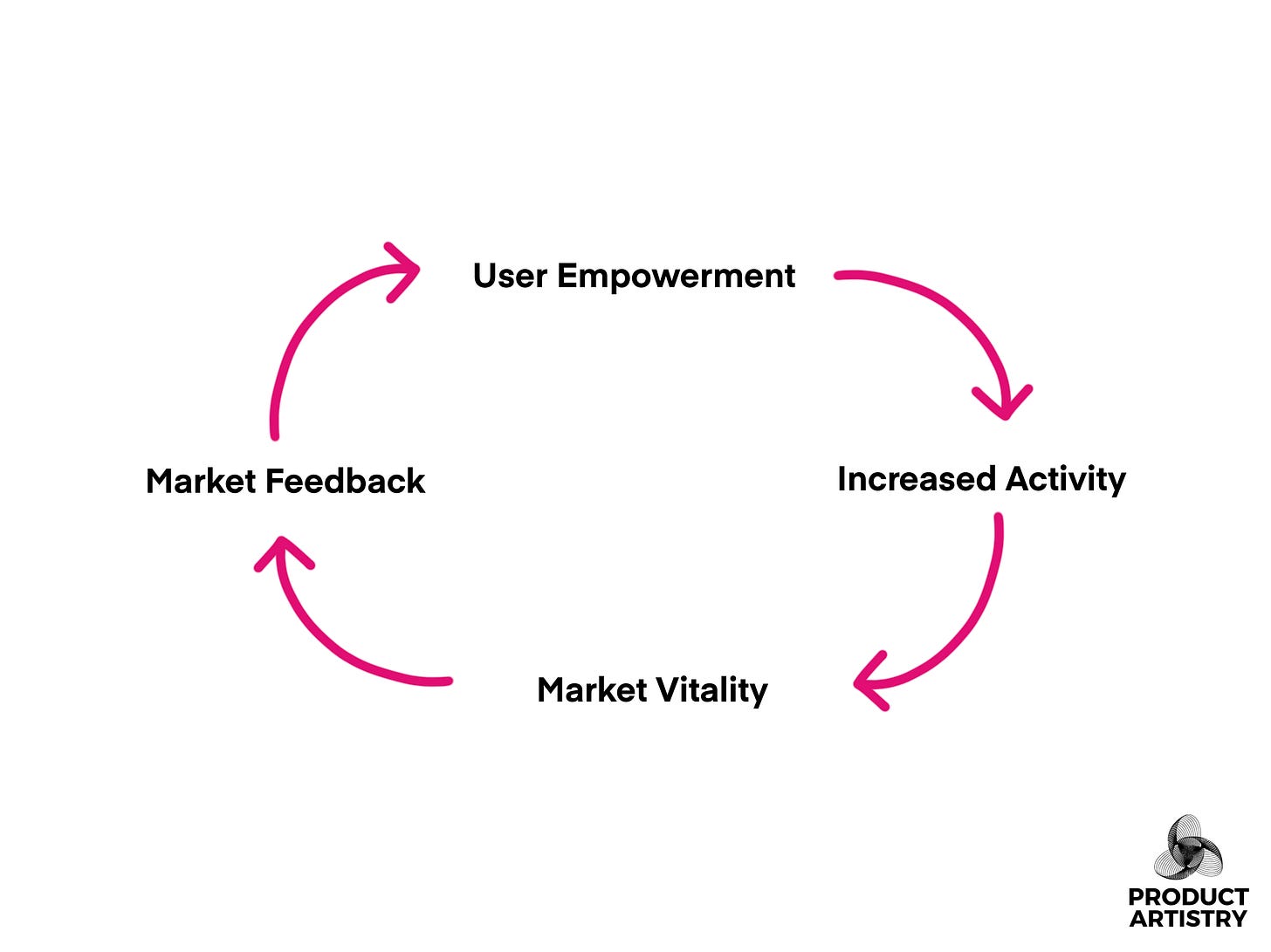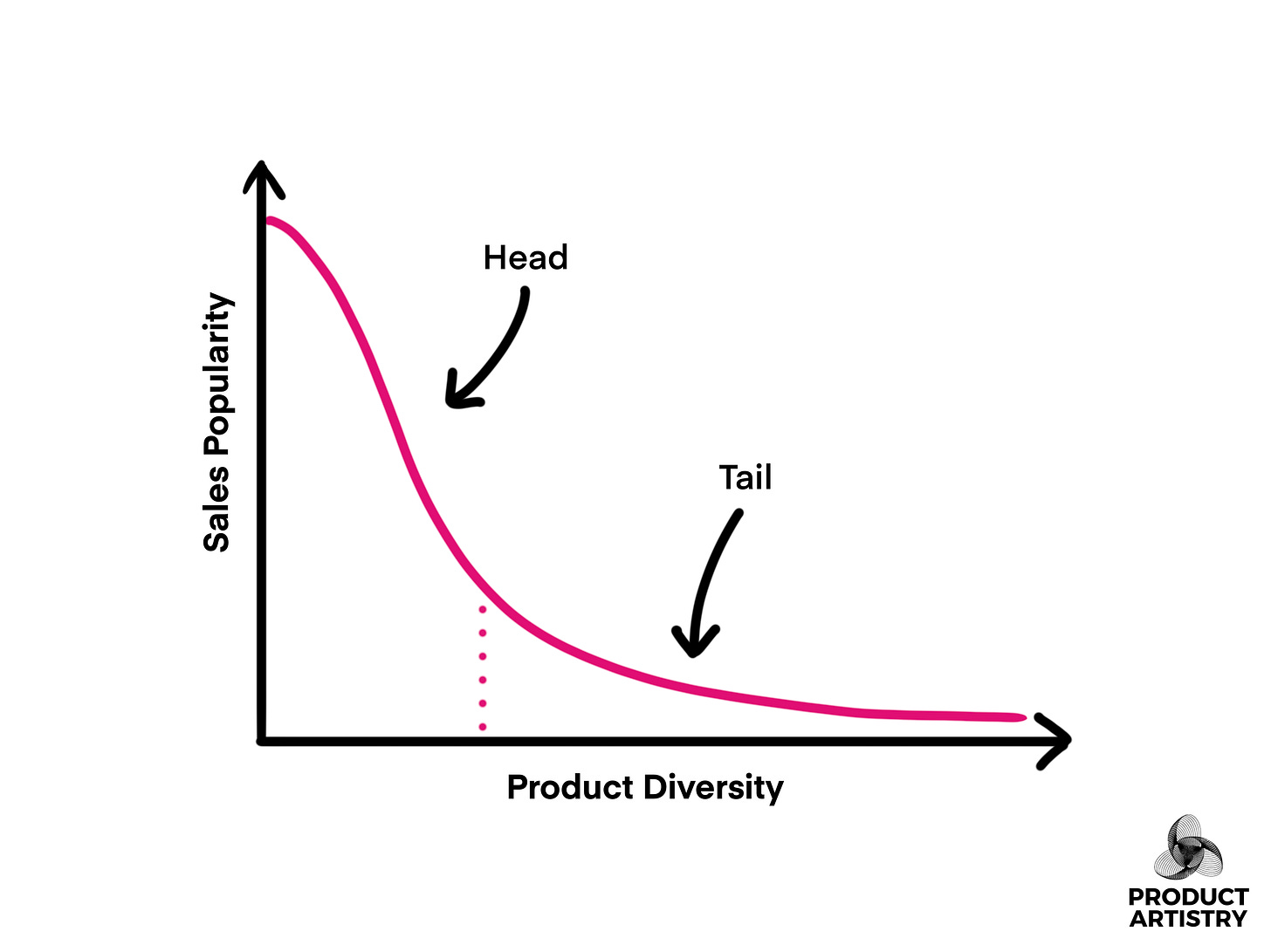7 Lessons from eBay's Pioneering of the Modern Marketplace
Designing for Trust: Strategies for Product Growth, User Empowerment, and Value Scaling from E-Commerce
In the early days of the internet, entrusting money to the digital void was a gamble, one eBay tackled as it paved the way for trust in online marketplaces.
This journey not only revolutionized digital transactions but also offers timeless lessons in product design and user trust.
Sections Covered:
Lesson 1: Transparency builds Trust
Lesson 2: Empower your Users
Lesson 3: Build Community
Lesson 4: The Power of Niches
Lesson 5: Embrace Feedback to Scale
Lesson 6: Double Down on Synergy
Lesson 7: Embrace New Technologies
Lesson 1: Transparency builds Trust
We take for granted the confidence and ease with which we make online transactions today.
In the dawn of e-commerce, eBay confronted a fundamental challenge: building trust in a marketplace where buyers and sellers were invisible to each other.
Questions of trust permeated every transaction: Can I trust the seller? The payment process? The delivery? And importantly, is there a safety net if things go wrong?
To bridge this trust gap, eBay implemented a feedback system. More than just a feature, it was a public ledger of product experience, recording the history of transactions between strangers. This system did more than facilitate transactions; it built a community where a seller's reputation became their most valuable currency.
Further bolstering this trust through transparency, eBay also implemented escrow services, ensuring transactions were not only secure but visible and agreeable to both parties. Pavlou and Gefen (2002) highlighted the pivotal role of these institution-based trust mechanisms, like eBay's pioneering feedback and escrow services, in mitigating transaction risks and fostering buyer trust. Their study supports the notion that systematic feedback, coupled with secure transaction processes, not only builds community but also improves transaction intentions.
By transforming trust into a core asset, eBay succeeded and set a precedent that redefined online interactions. As digital products, like OpenAI’s GPT, grow in complexity, the need for transparency and trust becomes more critical. It's no longer just about feedback mechanisms but about making the workings and benefits of these advanced systems clear to users. Embedding transparency from the start is essential, ensuring that even the most intricate 'black-box' technologies can be understood, paving the way for a future where users confidently embrace the full potential of digital innovation.
Lesson 2: Empower your Users
At the heart of eBay's explosive growth and enduring success is a fundamental principle: empower every user. This commitment is especially evident in how eBay nurtured its segment of power sellers, a strategy that not only catalysed its expansion but also shaped its marketplace dynamics.
Power sellers on eBay are not just any vendors; they are the backbone of the marketplace, distinguished by their high volume of transactions and consistent excellence in service. These individuals or businesses achieve significant sales milestones, maintain positive feedback scores, and adhere to eBay's standards of customer service. In essence, power sellers are the driving force behind the vibrant commerce on eBay, setting benchmarks for quality and reliability. We can almost think of them as a franchisee of the brand’s reputation.
eBay's strategy to uplift its user base was twofold: make the platform accessible and productive for casual sellers and provide advanced tools for power sellers to thrive.
For Casual Sellers: eBay introduced user-friendly listing tools and detailed analytics. These features made it easy for anyone to list an item for sale and provided insights into market trends, helping sellers optimize their offerings. By demystifying the selling process, eBay empowered casual sellers to participate more fully in the marketplace.
For Power Sellers: eBay went a step further by offering an API for seamless inventory management system integration. This advanced tool allowed power sellers to automate listing, manage inventories in real-time, and synchronize their operations with eBay's platform, significantly enhancing efficiency and scalability. Such technological empowerment was crucial for retaining high-volume sellers and integrating their businesses smoothly into the eBay ecosystem.
By catering to both casual and power sellers, eBay fostered an inclusive environment where all users had the opportunity to grow. This strategy not only expanded the marketplace's appeal but also encouraged innovation and diversity in the offerings available on eBay. Power sellers, equipped with the right tools, could experiment with new products and strategies, driving the marketplace's evolution. Meanwhile, casual sellers could elevate their status to become power sellers, contributing to a dynamic and competitive environment.
eBay's empowerment of its users fostered growth and innovation, through a self-improving feedback loop. By understanding and supporting the needs of both casual and power sellers, eBay built a robust marketplace that thrived on diversity, competition, and community.
Lesson 3: Build Community
eBay's understanding that an individual's success on their platform contributes to a collective success was visionary. This principle is mirrored today across various platforms like YouTube, Medium, and LinkedIn, where the proliferation of supportive content fosters a virtuous cycle of mutual benefit. The promoter gains attention and engagement, the learner acquires valuable insights, and the platform itself benefits from enhanced engagement that potentially leads to exponential growth in user acquisition.
Tadelis (2016) highlights the crucial role of reputation and feedback systems in e-commerce platforms, which are instrumental in facilitating trust among users. eBay's implementation of such systems laid the groundwork for transparent community interactions, where users could trust not only in the transactions but in the communal knowledge shared among them and where reputation serves as a currency of reliability and quality.
Moreover, Tadelis provides empirical evidence on the impact of reputation on market outcomes, underscoring how a positive reputation significantly influences seller success in terms of pricing and sales volume. This reinforces the idea that within community-driven platforms, a good reputation not only elevates individual users but enhances the overall platform's value proposition, attracting more participants and fostering a richer user ecosystem.
In essence, eBay's early recognition of the value of fostering a community where success is shared among its members has proven to be a cornerstone of its strategy. The platform's emphasis on transparent feedback and reputation mechanisms has not only cultivated trust but has also encouraged a culture of mutual support and collaboration, yielding a self-reinforcing cycle of engagement and growth, demonstrating the power of community in the digital age.
Lesson 4: The Power of Niches
The embrace of niche markets is celebrated as innovative in the realm of entrepreneurship, prominently discussed on platforms like LinkedIn and Medium. Yet, this strategy's roots extend well before the digital era, emphasizing execution over mere identification of niche opportunities.
eBay's choice to engage with specific communities, such as collectors of Beanie Babies, showcases a deliberate effort to anchor itself within these passionate groups, making it the premier online marketplace for unique and collectible items.
Peter Thiel's analysis in Zero to One: Notes on Startups, or How to Build the Future (2014) sheds light on eBay's niche market focus, demonstrating how eBay initially focused on small communities before expanding its reach. This method underlines the significance of market sequencing and disciplined expansion. Thiel's observations, particularly on eBay's success with distinctive items and the challenges in commodity markets, highlight the importance of understanding market dynamics for scalability.
eBay's story highlights the importance of strategic niche focus as a growth foundation and the necessity of strategic planning for scalable market expansion. This approach not only secures a solid base but also facilitates scalable growth into adjacent markets.
Utilizing the digital marketplace, eBay could offer a wide array of unique, rare, or specialized items, illustrating Chris Anderson's Long Tail theory (2006). This allowed them to out-compete traditional brick-and-mortar stores, which were limited by physical space and the cost of stocking low-demand items, thus broadening the product variety for consumers and sellers alike.
This figure visualizes the Long Tail theory, showing how eBay captured both high-demand products (the Head) and niche items (the Tail) to create a vast and diverse marketplace. This approach underscored the viability of niche markets within the digital economy, which conventional retail stores could not replicate due to their physical constraints.
Lesson 5: Embrace Feedback to Scale
eBay's model exemplifies the principle that markets are fundamentally conversations, a concept deeply explored by Levine, Locke, Searls, and Weinberger in The Cluetrain Manifesto (2000). The platform's innovation in enabling direct interactions between buyers and sellers established a community grounded in trust. This approach not only positioned eBay at the forefront of internet commerce but also demonstrated a proactive role in shaping a more direct and personal marketplace.
This system allowed eBay to scale effectively, understanding that the social dynamics of its users played a critical role in its marketplace. The feedback mechanism wasn't just a tool for gauging satisfaction; it was a means for continuous dialogue, where each review and rating enriched the community's knowledge base, guiding decisions and fostering a cycle of improvement and growth.
Even today, the emphasis on personalisation by various companies, as contrasted with more generic experiences from larger entities like Amazon, echoes eBay's early recognition of the value in these market conversations. Personalised experiences, informed by direct customer feedback, justify a higher perceived value, underscoring the continued relevance of engaging directly with users.
Through this lens, eBay's use of customer feedback as a scaling mechanism becomes a clear example of how digital platforms can thrive by embracing the conversational nature of markets. It showcases how creating a space for dialogue and community can not only drive technological innovation but also foster a sense of belonging and trust among users, essential components for success in the digital age.
Lesson 6: Double Down on Synergy
The art of synergy is exemplified in the partnership between PayPal and eBay; an alliance that transformed online transactions and set a new benchmark in the digital marketplace. As detailed by Masters and Thiel in Zero to One: Notes on Startups, or How to Build the Future (2014), PayPal's integration with eBay significantly enhanced the buying and selling process, offering instant payment and eliminating the delays and uncertainties associated with traditional methods like check payments, which at the time could be up to 7-10 days. This breakthrough not only improved transaction efficiency but also solidified trust between the platform and its users, showcasing the extreme value in addressing existing inefficiencies in online markets.
Initially, PayPal's focus on PalmPilot users did not achieve the expected traction due to a lack of a defined user base with a specific need for its service. However, the strategic pivot to serve eBay's PowerSellers, a highly active yet underserved segment, marked a turning point, and after only three months of dedicated effort, PayPal was serving 25% of them (Masters & Thiel, 2012). This targeted approach enabled PayPal to swiftly dominate this niche, illustrating the effectiveness of concentrating on a select group of users with distinct needs. The synergy between PayPal and eBay exemplified how complementary strengths, when aligned, can unlock exponential growth and redefine market standards.
This narrative of synergy and strategic market focus not only elevated PayPal to become an indispensable tool for eBay users but also laid the groundwork for eBay's acquisition of PayPal in 2002, further solidifying their success through the compounded value of the products. Despite PayPal's subsequent spin-off from eBay, the initial collaboration remains a testament to the transformative power of their synergy. Today, we witness the legacy of such integrations in the seamless experiences offered by platforms like Notion, where the value of synergy continues to drive growth and innovation. The lesson here is clear: true breakthroughs in business often come not from going at it alone but from finding and exploiting synergies that can catapult a solution from being merely an option to becoming an indispensable part of a market's fabric.
Lesson 7: Embrace New Technologies
eBay's journey into mobile commerce began in 2008, marking the launch of its first mobile app at a time when the concept of shopping on a mobile device was still in its infancy. This early adoption underscored eBay's recognition of mobile's revolutionary potential in e-commerce.
The development of eBay's mobile app was not without its challenges. Initially, the app faced trust issues similar to those encountered by the broader platform, and its development was characterized by a "hacky" approach, spearheaded by a team of entrepreneurial tinkerers. This effort grew from the solitary work of Steve Yankovich, who joined eBay at the beginning of 2009 to lead the company's investment in mobile technologies. Reflecting on the process, Yankovich noted, "We created a strategy in 2011 where we outlined our vision for emerging technologies, including a moonshot description for image recognition and for voice recognition. Many of the things we outlined, like computer vision and augmented reality, are live today" (Fields, 2018). This strategic vision underscored eBay's commitment to not just follow but lead in the adoption of emerging technologies.
Yankovich's approach to innovation was deeply influenced by his background in startups and hardware, prompting eBay to leverage developments from some of the world's leading hardware manufacturers. By focusing on the innovation occurring within the devices themselves—such as improved camera functionalities—eBay could integrate these advancements into its mobile app, enhancing the user experience and expanding its e-commerce capabilities. This strategy of accessing innovation through the R&D efforts of others reflects a symbiotic relationship between eBay and the broader technological ecosystem, exemplifying Yankovich's vision and eBay's adaptability.
As eBay's mobile app evolved, it became a testament to the company's "mobile-first" strategy, emphasising the importance of providing a seamless, engaging shopping experience on mobile devices. This approach not only aligned with changing consumer behaviours but also positioned eBay at the forefront of e-commerce innovation.
Thanks for reading!—Found value in this? Three ways to help:
Like, Comment, and Share—Help increase the reach of these ideas
Subscribe for free—Join our community of makers
Become a paid subscriber—Support this creative journey
Keep Iterating,
—Rohan
→ Connect with me on LinkedIn, Bluesky, Threads, or X.
Sources:
Anderson, C. (2006). The Long Tail: Why the Future of Business is Selling Less of More. Hyperion.
Fields, K. (2018, July 11). The Last 10 Years of Our eBay App with Steve Yankovich. eBay News Team. [Link to Source]
Levine, R., Locke, C., Searls, D., & Weinberger, D. (2000). The Cluetrain Manifesto: The End of Business as Usual. Perseus Books. [Link to Source]
Masters, B., & Thiel, P. (2014). Zero to One: Notes on Startups, or How to Build the Future (pp. 39, 40; 42-44). Ebury Publishing. Kindle Edition.
Pavlou, P.A., & Gefen, D. (2002). Building Effective Online Marketplaces with Institution-Based Trust. In Proceedings of the International Conference on Information Systems (ICIS) 2002, Barcelona, Spain. [Link to Source]
Tadelis, S. (2016). Reputation and Feedback Systems in Online Platform Markets. UC Berkeley Haas School of Business, NBER and CEPR. February 8, 2016. [Link to Source]






